
Having returned from Germany late on Sunday I was a bit bleary eyed as I answered the phone early on Monday. Chiswick Camera Centre, no less, and what could they want at this time of the morning? Frank it was, and he wondered if I might be interested in a job lot of Panasonic m4/3 equipment that had landed on their doorstep.
Of course I couldn’t resist the siren call and headed out west to Chiswick as soon as I could get myself to the Tube station. At the family-run dealership in Acton Lane I found a neat pile of Panasonic boxes. A regular customer had decided to give up on m4/3 and transfer his affections to Fuji. It’s a mirror image of my move from Fuji (given that Bill Palmer covers that marque pretty well for Macfilos) to micro four-thirds just a few months ago.
Mint condition
This customer is obviously a man after my own heart. All the items were in mint condition and looked pretty impressive. So I sifted through the offerings and came away with two cameras and two lenses. Satan, of get-thee-behind-me notoriety, is clearly on holiday this week.
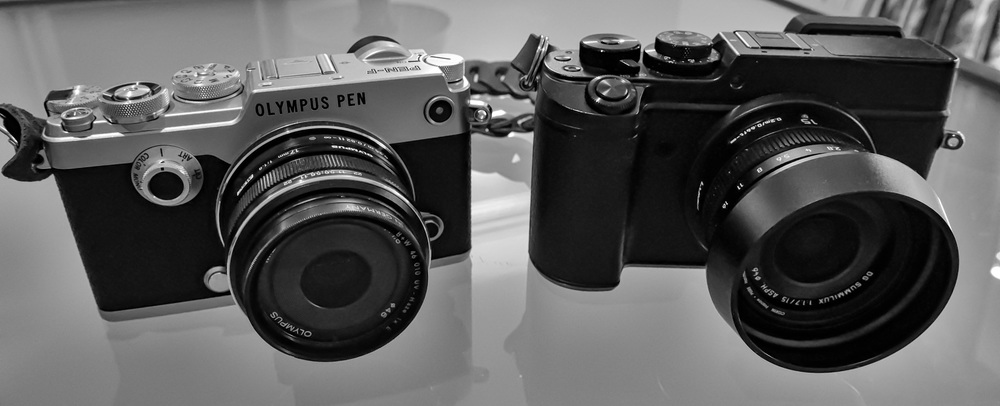
After some months with Olympus—just last week I was piloting the PEN-F and 12-40 through the north Tirol—I was about to embark on the other leg of the micro four-thirds empire: Panasonic.
The cameras in question were an almost-new GX8, the successor to the popular tilt-viewfinder GX7, and the remarkably compact GM1. Introduced in 2013, the viewfinderless GM1 is a miniature miracle. Smaller than the Sony RX100 or the Canon G7X (both with 1in sensors) this is a truly pocketable camera. But instead of a measly 1in sensor it packs an m4/3 chip. When you consider that it can take also any m4/3 lens the the true significance of this lightweight contender is apparent. And at nearly three years old it was a bargain.
The GM1 is most at home, though, with the tiny kit zoom (made specially for the launch), which came attached. It’s slow (f/3.5-5.6) but, unusually for a basic lens, offers the useful 12mm (24mm) widest angle. The 32mm (64mm) full zoom is less impressive, certainly much shorter than the Sony or Canon, but perfectly adequate. Accord to Andy Sands of Chiswick Cameras, the results from the GM1 and 12-32mm combination are superb. it is one of his favourite pocket cameras. I will now try it for myself and report on progress.
I’ve had my eye on a GM1 ever since I saw it back in 2013. It competes directly with the Sony RX100 and Canon G7X, although the lens is much slower than either of these fixed-lens compacts. But it can take all m/43 lenses (such as the 15mm Leica Summilux, more on that later) and is arguably more versatile. Above all, it has a much bigger sensor than either of the other contenders.
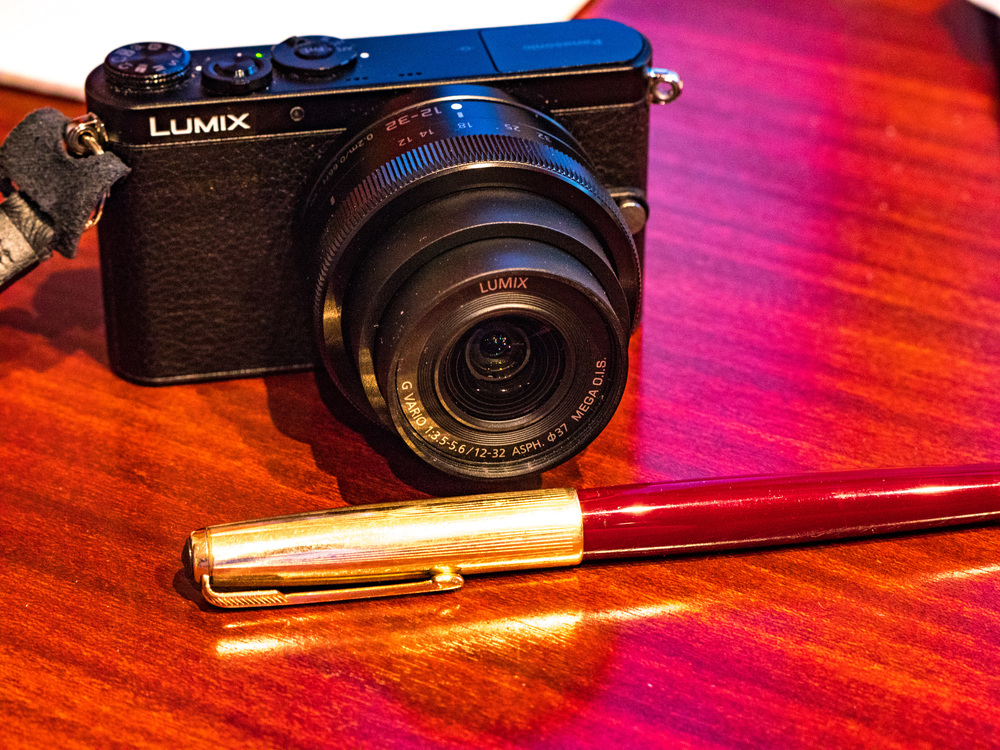
GX8 takes a bow
The other camera is Panasonic’s new rangefinder flagship, the GX8. Having tried its predecessor, the GX7 (and liked what I saw), I hadn’t thought much about the GX8 and I hadn’t had the chance to handle one. All I knew was what I had read on various blogs and, frankly, I’ve so far been impressed with the offerings from Panasonic’s rival, Olympus. But here was the GX8 on a plate in front of me. Too good to refuse.
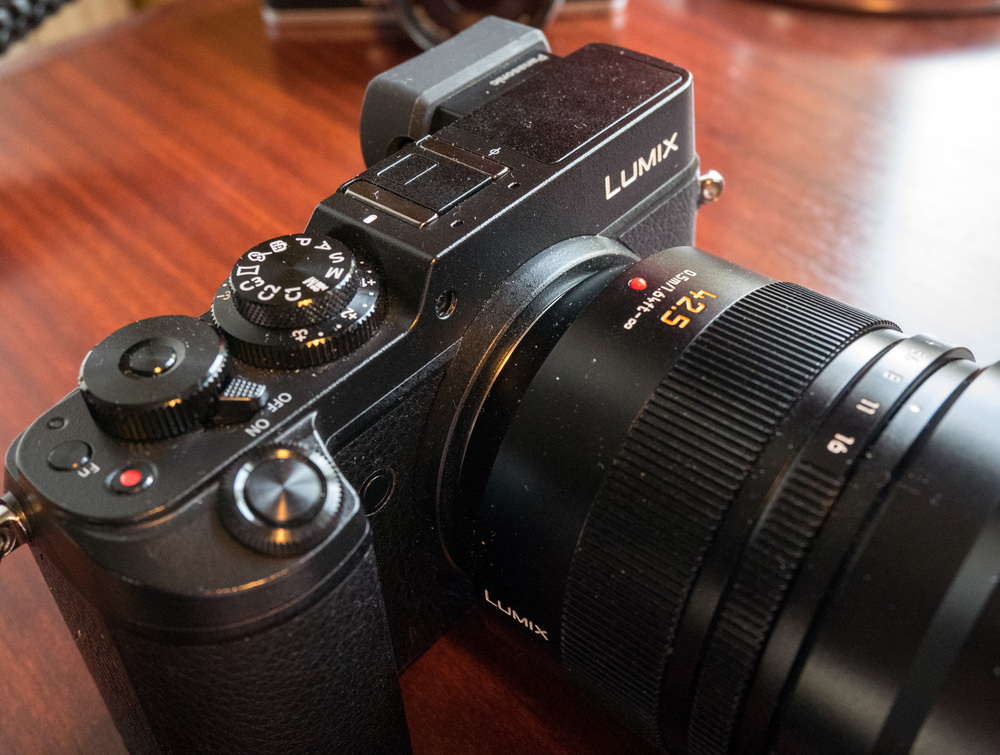
I have to say straight off that I am highly impressed with the GX8. It is a completely different animal to the Olympus PEN-F. While the PEN-F is perhaps over-retroed, the GX8 is a businesslike beast which is built like a tank and is weather proofed. It is slightly larger than the PEN-F but, with its built-in grip, it is a very comfortable camera to hold. As with the Olympus, the screen can be reversed when you are not chimping, and the controls are well laid out. The exposure compensation dial is concentric with the mode dial and stays where it is set. The Olympus, as with many modern cameras, has an easily nudged dial on the far right of the top plate. All in all, this is a solid piece of kit that looks just a bit more grown up than the PEN.
In many ways, too, the Lumix seems less contrived and more professional than the rather gimmicky Olympus. For me, though, the crowning glory of the GX8 (as with the GX7) is the tilting viewfinder. For low shots it is a great boon and I am going to like it.
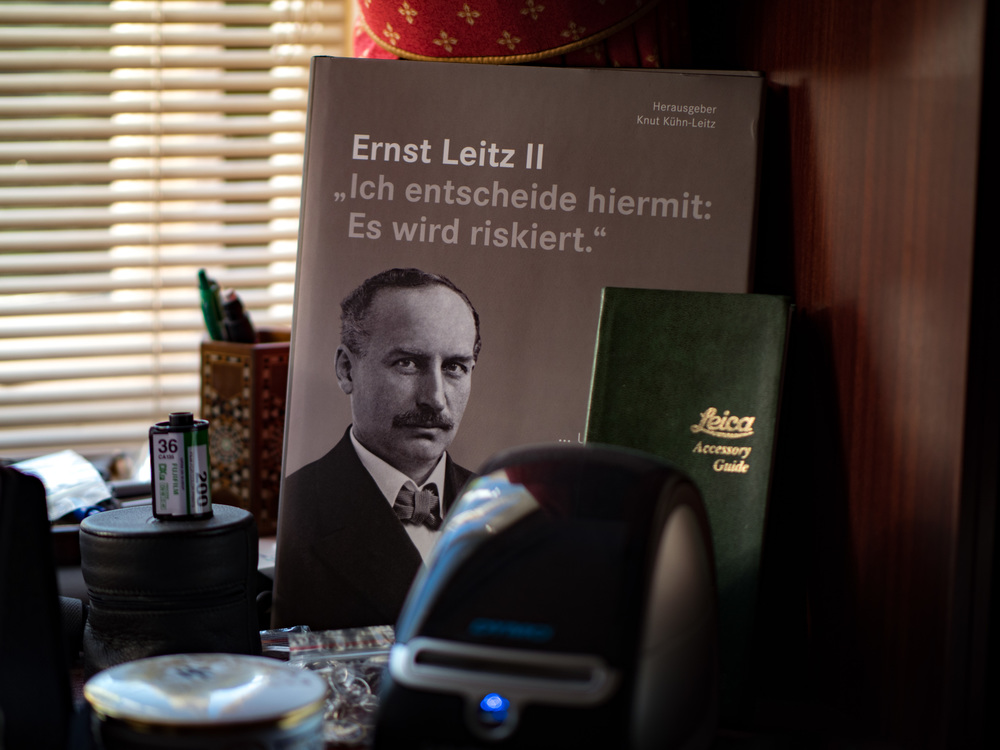
A fine old bag of lenses
So what lenses fell off the counter into my voluminous Billingham? The star turn, undoubtedly, was the Leica DG Nocticron f/1.2 with its 42.5mm focal length, equivalent to a full-frame 85mm. This lens feels very much Leica, surprisingly more so than I imagined possible, and it offers one of my favourite focal lengths for portraiture and, on occasion, street photography. Bearing a superficial resemblance to its alter ego, the Leica-M Noctilux, the Nocticron is fast but not that fast.
While it gathers the light of an f/1.2 it cannot achieve the narrow depth of field of a full-frame f/1.4, not to mention the 0.95 aperture of the Noctilux. Nevertheless, it is a stunning lens and perfectly complements the GX8. In fact, if Leica had ever entertained entering the micro four-thirds market, this could be the camera and lens that I would have on the desk in front of me—but bearing the legend LEICA instead of LUMIX. It doesn’t need much imagination.
The final acquisition of the day was the Leica DG 15mm f/1.7 Summilux offering a rather unusual 30mm focal length, lightly longer than the 28mm I got so used to last year with the Leica Q. Since I already own the Olympus 17mm f/1.7 (a more normal 35mm lens) I wasn’t too interested in the 15mm. But as part of the package it made sense.
After trying it I am more enthusiastic than I expected. I like the Olympus 17mm because of its ingenious auto/manual clutch ring (a common feature with the Olympus Pro zooms, the 7-14, 12-40 and 40-150mm). On the Lumix Leica lens this feature is replaced by a simple AF/MF switch. It’s just as effective, although more fiddly to operate, but forgoes the distance scale which appears on the Olympus when the clutch ring is pulled backwards.
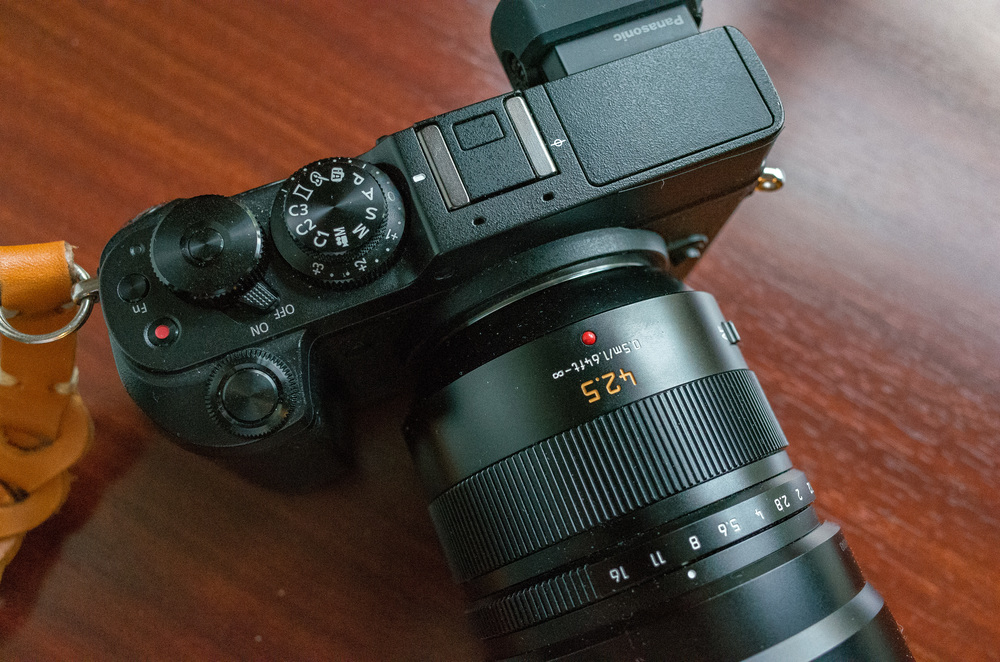
But, and this is important, the Leica DG 15mm lens sports an all-singing-and-dancing aperture ring. Just like an M lens (and, for that matter, just like the ring on the Nocticron that was already in the Hadley Pro). On balance, I’ll forgo the focus clutch in favour of this familiar method of selecting an aperture. It is streets ahead of selecting the aperture in the viewfinder display by twiddling a control wheel.
It is also interesting to note that the 15mm lens was introduced shortly after the tiny GM1 and was designed specifically to fit that camera without extending above and below the minuscule body. It is not much bigger than the kit zoom and offers a rather delicious prime option for the GM1. Watch this space.
It will now be very interesting to compare the Olympus system with the Lumix. While the PEN-F is a very compact and solidly built rangefinder lookalike, the Panasonic is crafted on a rather grander scale, offering better grip and a more professional image. It will probably handle larger lenses better than the Oly. and it certainly looks the business when twinned with the Nocticron. In a sense it combines the rangefinder attractiveness of the PEN-F with a dash of the more businesslike OM-D cameras. We will have to see if it lives up to the stiff competition from the very popular PEN-F.
__________
- Subscribe to Macfilos for free updates on articles as they are published. Read more here
- Want to make a comment on this article but having problems? Please read this

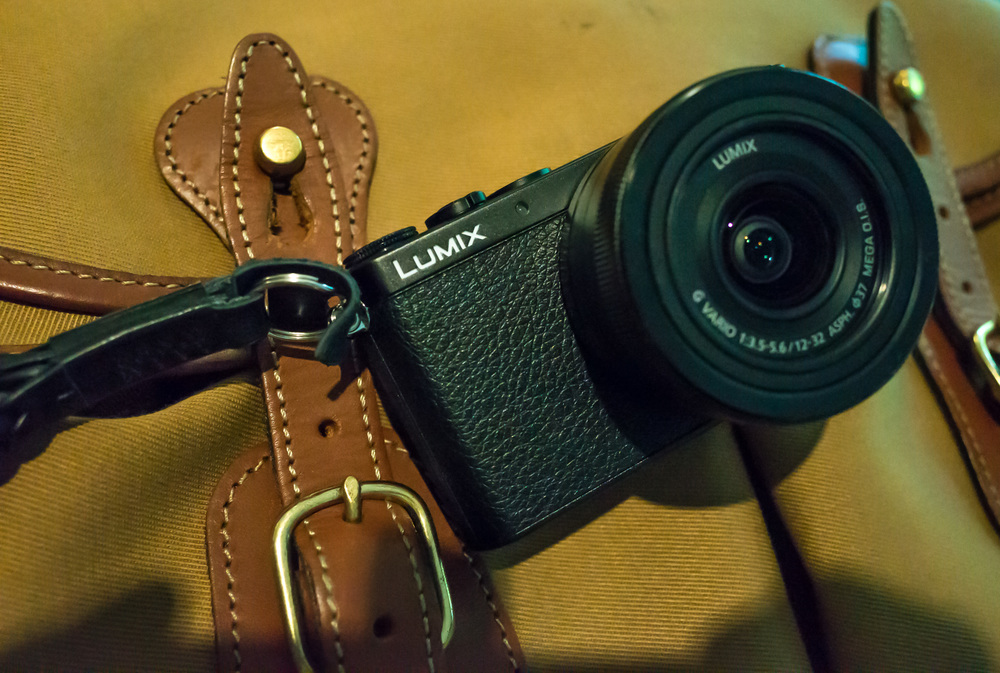
I can understand your taking to the GX8. I picked up a GX7 and 2 of the Leica m43 lenses to satisfy my temptations for the features in the Sony A7s, Leica Q and Leica T. It does a fantastic job; however, there’s no denying that the Leica M series are still the most fun cameras for me to use and I feel they deliver more soul especially with the Mandler era lenses.
Dan, I can agree on the M, any M. But the m4/3 system adds a very portable and competent travel alternative, especially when married with one of the excellent pro zooms. I tried the GX7 and liked it, although not thrilled with the viewfinder. The GX8 is somehow more grown up and is a very impressive Leica-like camera. The Leica DG lenses–I just acquired the new 12mm Summilux today–are quite superb. The 12mm and 42.5mm in particular look just like mini Noctiluxes. Time will tell if I remain satisfield.
The magnum photographer is Matt Black and John wo was gas fat fingers on I phone.
Thanks for the information, John. I’ve found Matt’s site and it looks interesting I will explore more.
In your writing you mention Sony rx100 last year class magnum photographers there is a micro 4/3 man And his work is impressive and he uses the mrk 3 Sony rx100. Since Panasonic added 4K I as a novice just wonder how much farther can they take 4/3rds?
Hi John, thanks for your input. Another reader, John Wilson, has pointed me in the direction of the guy you refer to–Matt Black I presume–and I will have a look. It is quite remarkable what Olympus and Panasonic have done with the m4/3 sensor. Only a year or so ago many people thought m4/3 was finished following the slide in prices of APS-C and, even, full-frame sensors. Why not have the biggest if the price isn’t much more? But m4/3 still has many advantages in terms of size, weight, speed of focus and sheer convenience. Sensor technology is getting better all the time and the now 20.4MP sensors in the PEN-F and GX8 are superb. While I still love my full-frame cameras, I now tend to pick up m4/3 when travelling. As I said before, m4/3 is also a viable second system for the full-frame camera owner. APS-C (and here I am thinking about cameras such as the X-T2) is much closer to full-frame in performance and is probably more likely to be a first system.
Very interesting write-up, Mike. I suspect that the Pen is not mightier this time… It’s a good camera but the GX8 is in a different class. I’ll follow with interest.